Today I'd like to invite you to another exhibition I visited yesterday. It was another surprise obviously as all I knew was the name of the artist and that the exhibition was brought from Hungary. Not looking up the artist online turned out to be a good decision as that's the only way of allowing yourself to be surprised when you enter the exhibition room.
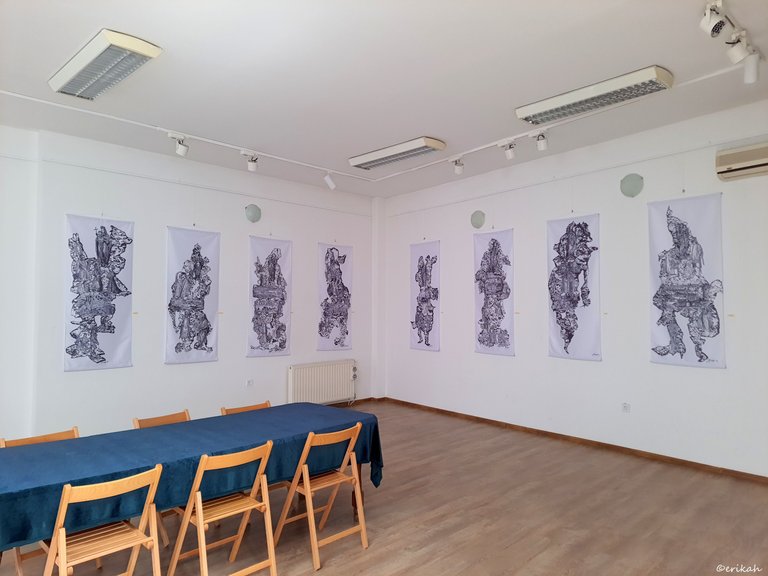
This is what I saw when I had a glance inside the exhibition room. Maybe it doesn't tell you much, but I knew right away I'm going to love it. Lately I had to realize I like detailed black and white drawings, graphics and even though at first I had no idea what techniques were used here, the artworks looked amazing.
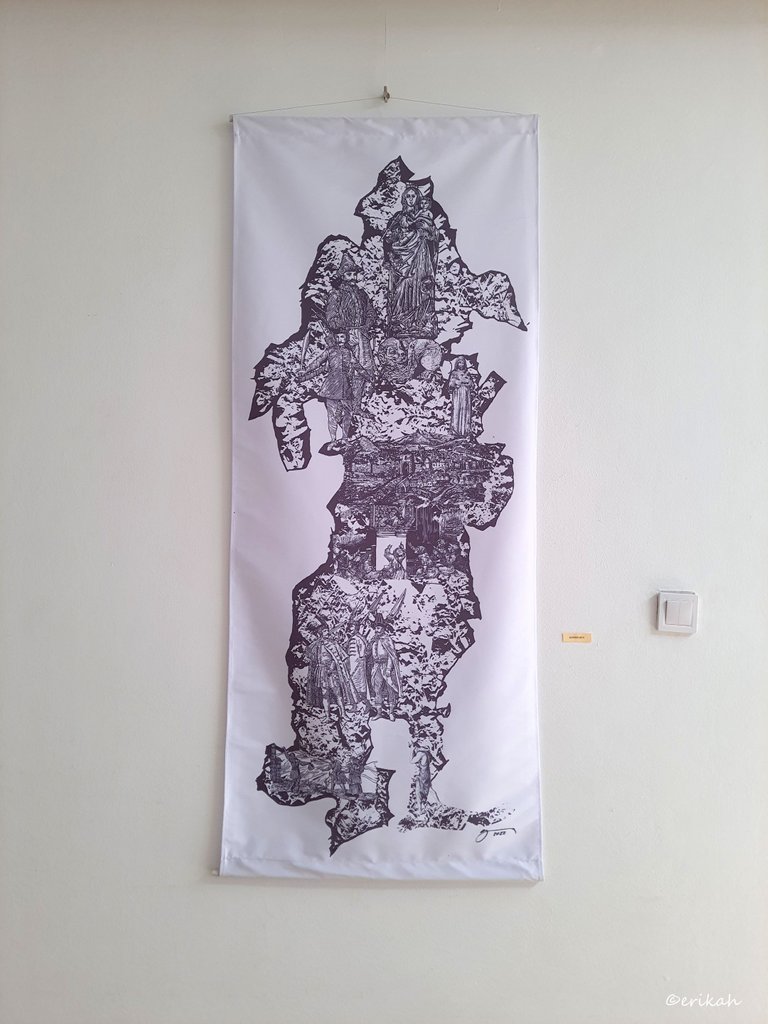
Lights were not on and even though I could have turned the lights on, I thought it was better without lights. A decision which turned out not the best. Once I got home realized the photos had to be processed.
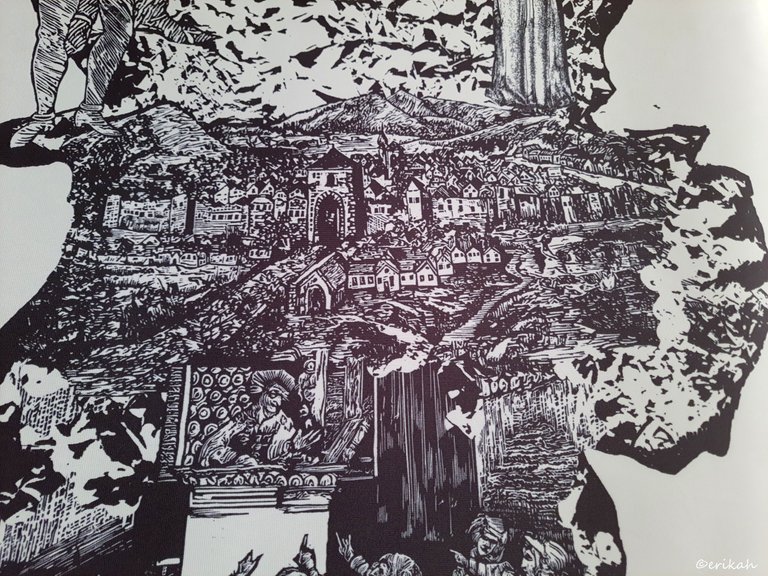
The smartest option was to take some close up photos of each work as for you, I don't think it's obvious what you see.
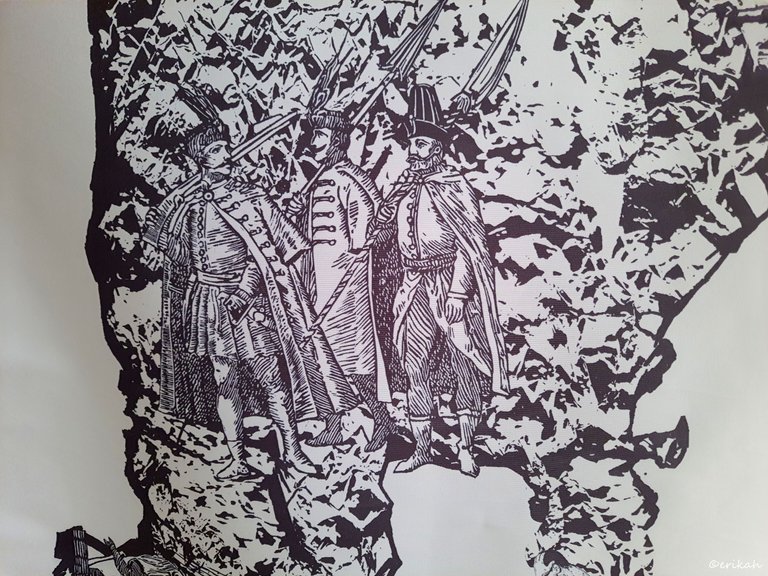
To save you from guessing, I can tell you that this is linocut on (synthetic) canvas.
Linocut, also known as lino print, lino printing or linoleum art, is a printmaking technique, a variant of woodcut in which a sheet of linoleum (sometimes mounted on a wooden block) is used for a relief surface. A design is cut into the linoleum surface with a sharp knife, V-shaped chisel or gouge, with the raised (uncarved) areas representing a reversal (mirror image) of the parts to show printed. The linoleum sheet is inked with a roller (called a brayer), and then impressed onto paper or fabric. The actual printing can be done by hand or with a printing press. source
The artist was Béla Szepessy and the exhibition was called Simplicissimus, which is the Latin word for simplest, very simple.
One of the most exciting thing about not knowing what you're going to see is that you have the chance to guess and figure it out on the spot. It's a mind game and in this case, I can tell you, I was lucky I know a bit of history and could figure out what the artist wanted to show us.
The artwork above is called Kisszeben, which is the Hungarian name of Sabinov.
Sabinov (Latin: Сibinium, Hungarian: Kisszeben, German: Zeben) is a small town located in the Prešov Region (north-eastern Slovakia), approximately 20 km from Prešov and 55 km from Košice. The population of Sabinov is 12,700. source
Kisszeben was not known to me, there's a city called Nagyszeben in Romania, which is called Sibiu in Romanian, but no Kisszeben. Sometimes I check things I don't know on the spot, but yesterday I did not do that, I preferred to guess and see if I was right.
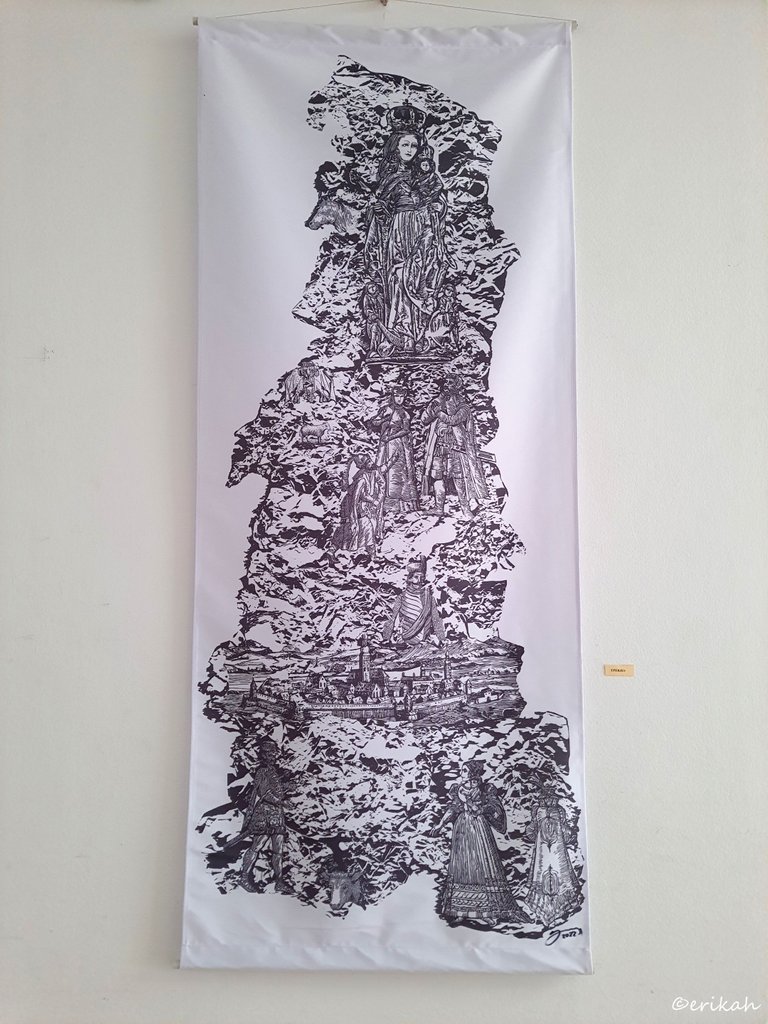
Eperjes
Eperjes is the Hungarian name of the Eastern Slovakian city, Prešov.
Prešov (Slovak pronunciation: [ˈpreʂɔw] (listen), Hungarian: Eperjes, Rusyn and Ukrainian: Пряшів) is a city in Eastern Slovakia. It is the seat of administrative Prešov Region (Slovak: Prešovský kraj) and Šariš, as well as the historic Sáros County of the Kingdom of Hungary. With a population of approximately 90,000 for the city, and in total about 110,000 with the metropolitan area, it is the third-largest city in Slovakia. It belongs to the Košice-Prešov agglomeration and is the natural cultural, economic, transport and administrative center of the Šariš region. It lends its name to the Eperjes-Tokaj Hill-Chain which was considered as the geographic entity on the first map of Hungary from 1528.[6] There are many tourist attractions in Prešov such as castles (e.g. Šariš Castle), pools and the old town. source
Here I started to suspect, that the keyword of the exhibition is Kingdom of Hungary and this is where knowing a bit of history can come in handy.
The Kingdom of Hungary was a monarchy in Central Europe that existed for nearly a millennium, from the Middle Ages into the 20th century. The Principality of Hungary emerged as a Christian kingdom upon the coronation of the first king Stephen I at Esztergom around the year 1000; his family (the Árpád dynasty) led the monarchy for 300 years. By the 12th century, the kingdom became a European middle power within the Western world. source
The Kingdom of Hungary does not exist anymore and some of its regions are now part of Romania, Slovakia, Serbia, Check Republic, Ukraine, Croatia and Austria.
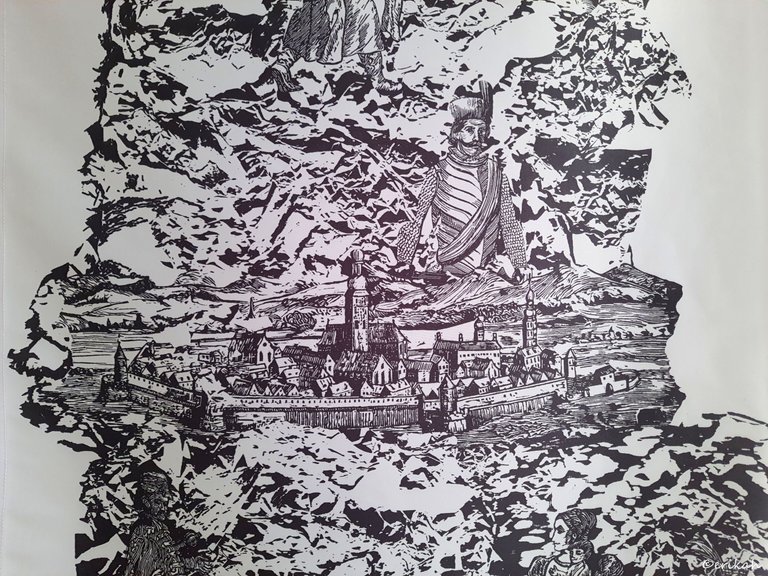
If you have a closer look, all of the linocuts contain fortresses, medieval establishments, historical personalities, like kings and nobles, religious personalities and religious scenes.
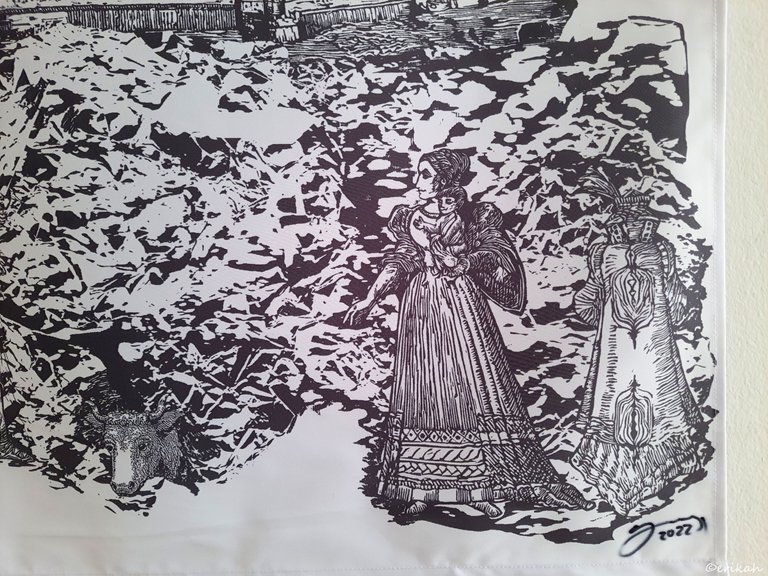
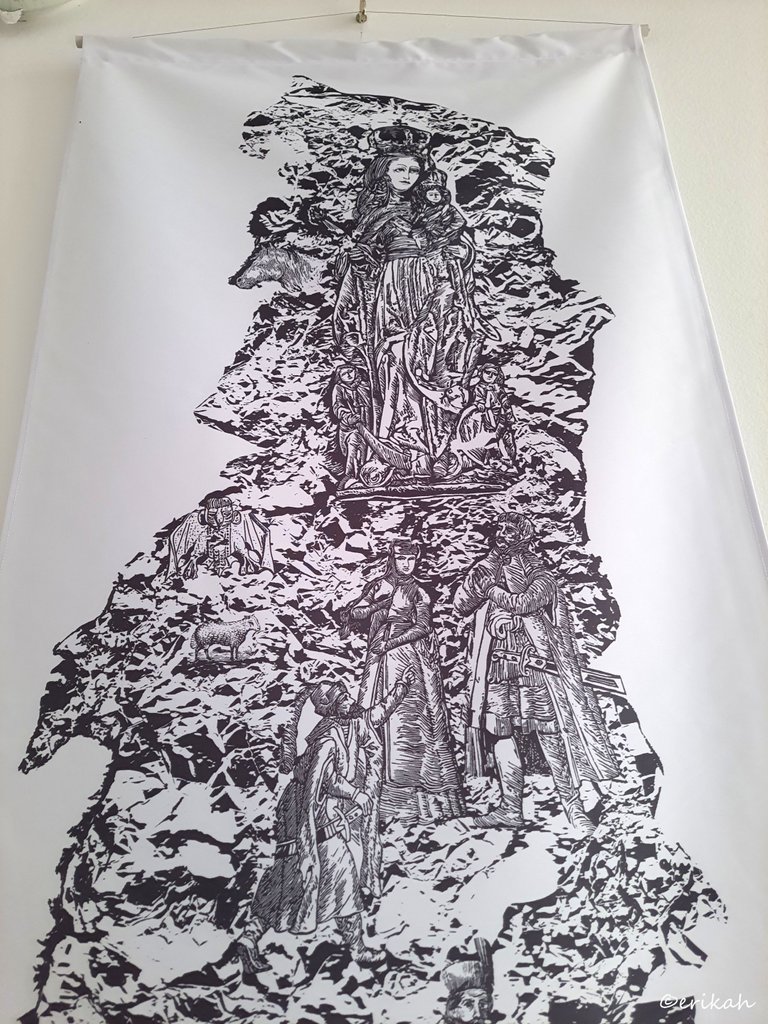
These are all historical scenes.
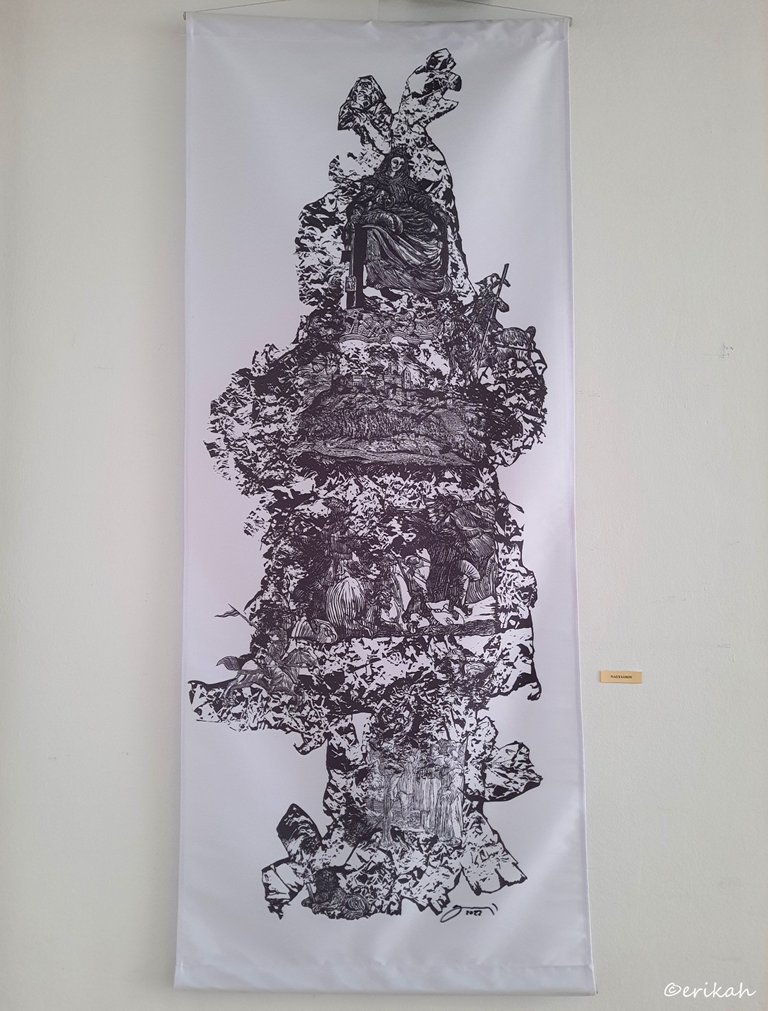
Nagysáros
Veľký Šariš (Hungarian: Nagysáros) is a small town near Prešov in eastern Slovakia. source
Unfortunately, due to the size of theses canvases, this was the best I could do. I'm not sure, but my estimation was that these were around 1.5m long.
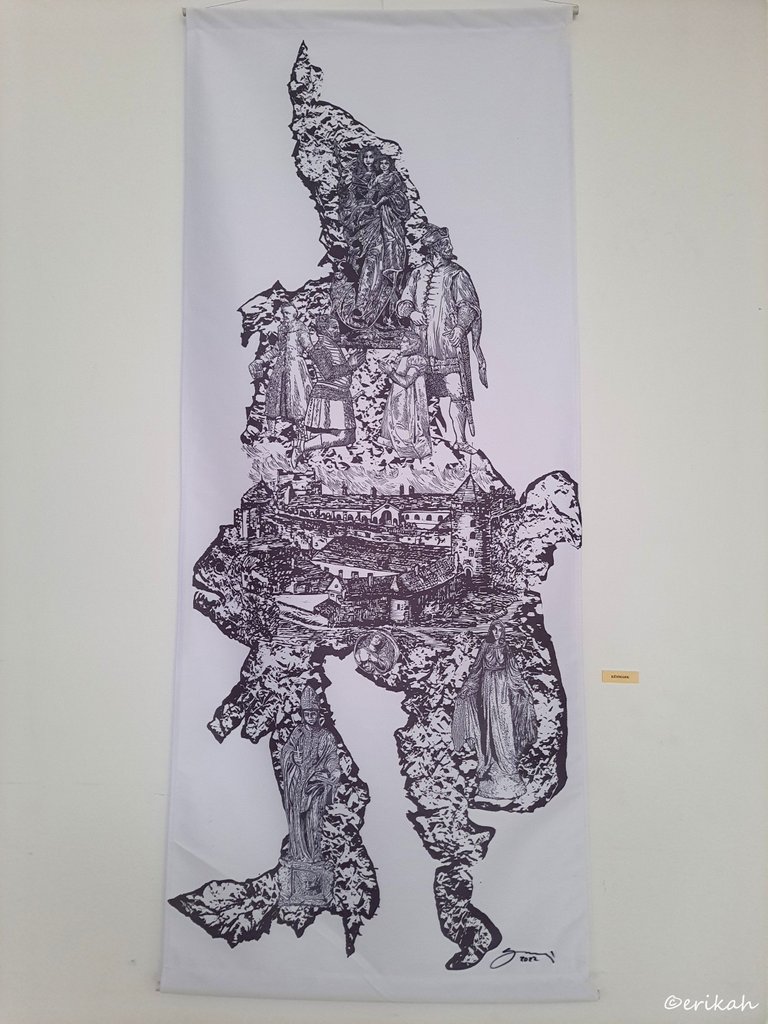
I was standing in the center of the room, trying to figure out what these forms are. Some looked like it could be people, dressed in medieval clothes (?). This shape has two legs, looks like it has a hat as well, but the rest is not clear.

Késmárk (Kežmarok, Slovakia)
Would be nice to visit all these cities one day, to see how those historical city centers look like now.
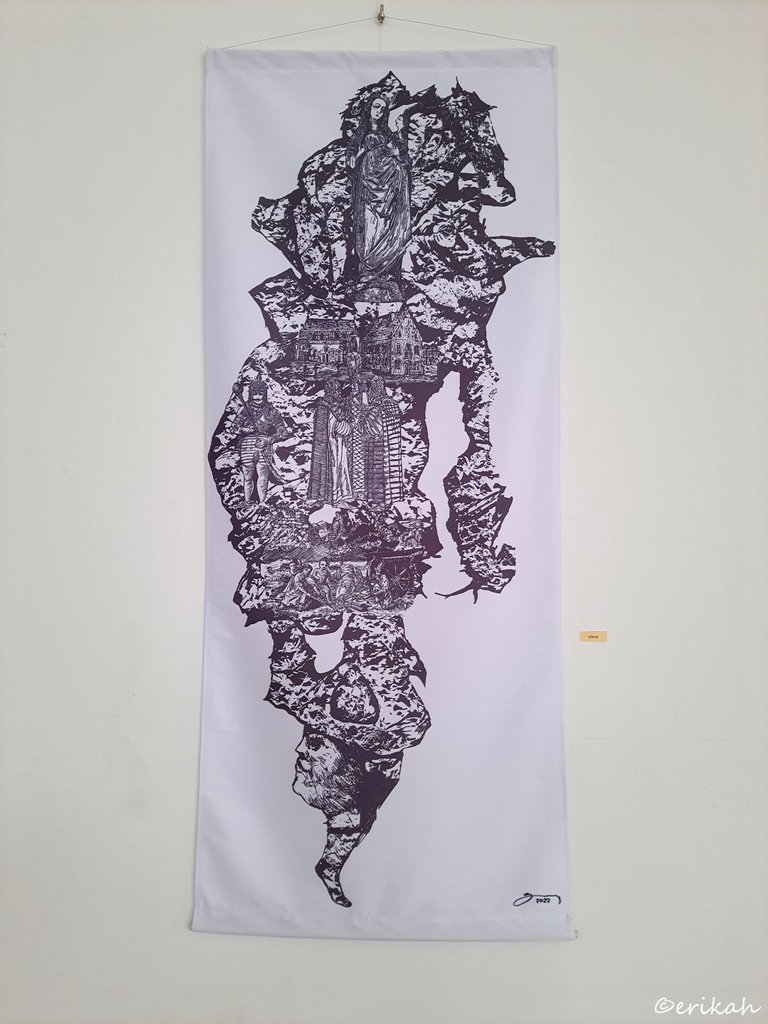
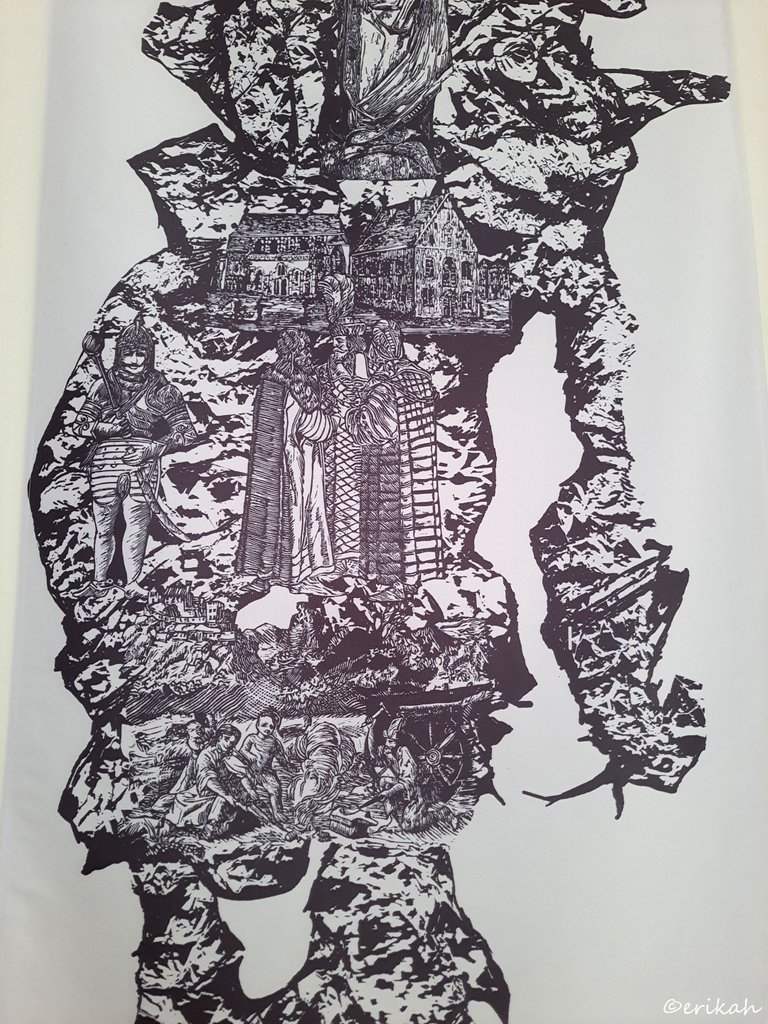
Lőcse (Levoča, Slovakia)
Imagine how much work must have gone into creating the negatives. The details of each work are exceptional.
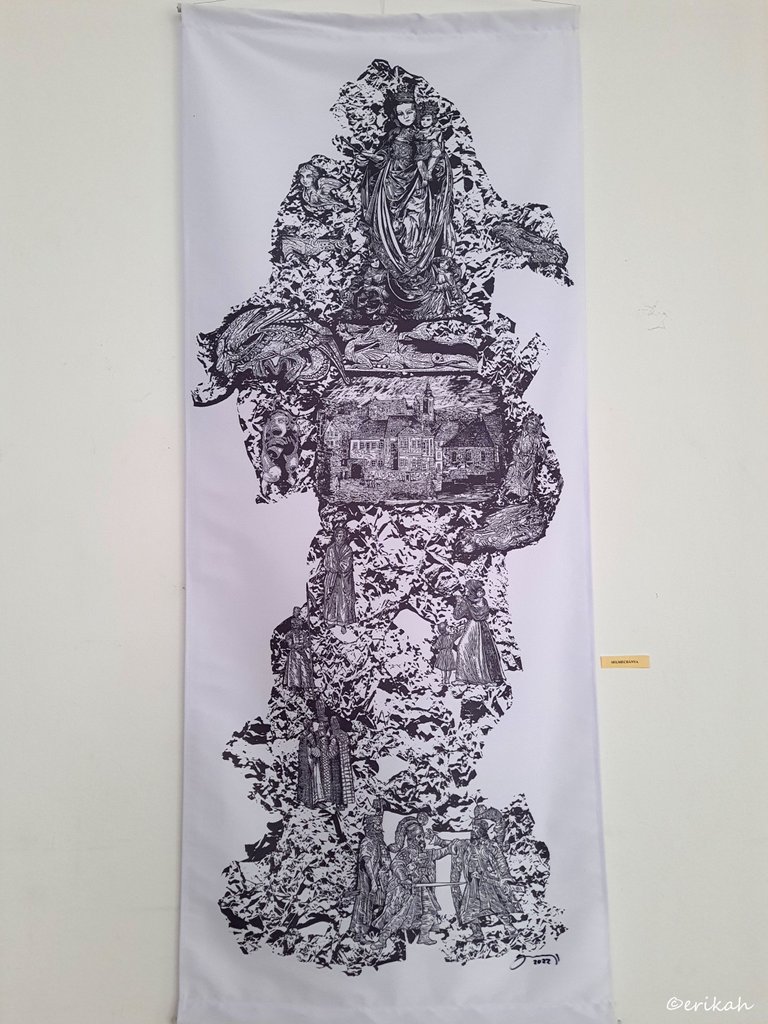
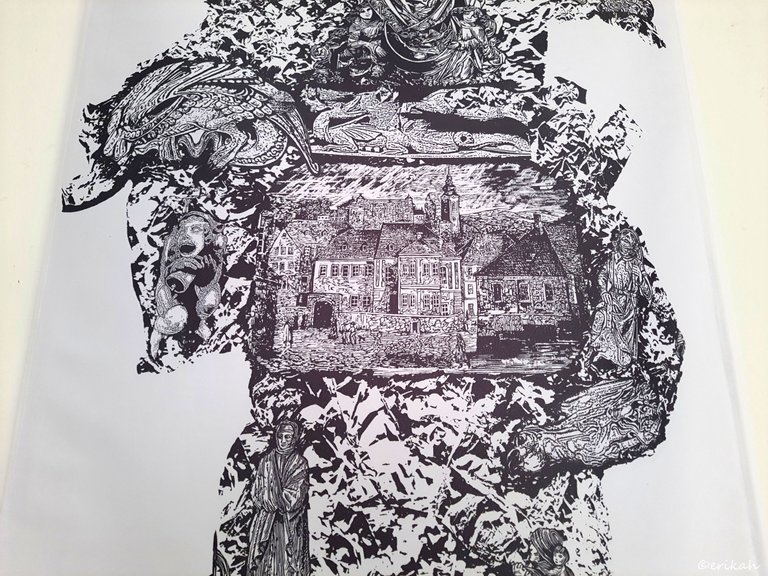
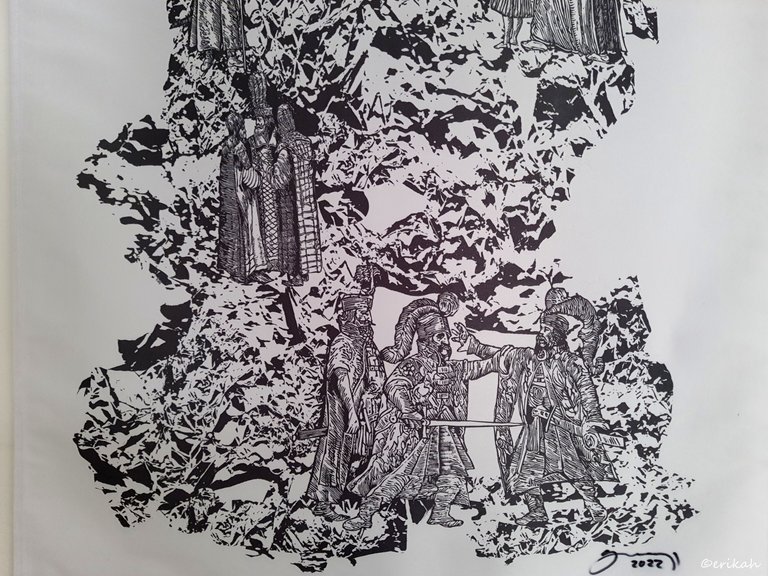
These details could be individual artworks as well as each piece represents a scene from history.
I hope one day I'll see the process of creating such beauties live.

If you're a newbie, you may want to check out these guides:
- Communities Explained - Newbie Guide
- Cross Posting And Reposting Explained, Using PeakD
- Hive Is Not For Me
- How To Pump Your Reputation Fast - Newbie Guide
- Tips And Tricks & Useful Hive Tools For Newbies
- More Useful Tools On Hive - Newbie Guide
- Community List And Why It Is Important To Post In The Right Community
- Witnesses And Proposals Explained - Newbie Guide
- To Stake, Or Not To Stake - Newbie Guide
- Tags And Tagging - Newbie Guide
- Newbie Expectations And Reality

All these are incredible works of art, I couldn't stop looking at them. There are different details everywhere and they are just stunning. I hope to visit Hungary one day and see them with my own eyes. Although I don't think this exhibition will stay there until then, but still 😂.
This exhibition is traveling the world, so who knows where it's going to go next, but its permanent place is in Hungary, so who knows.
Hi Erika what an interesting staging especially the historic made as lithographs but in oil on a canvas hanging pendant type, as plastic artists do to promote the culture of a country.
Beautiful works the table placed next to the works catches my attention, I assume that it is to do the curatorship of the works by those who curate the works.
As always walking by your side in that exhibition recreates my senses, grateful for your sharing.❤️🌞
Indeed it was a unique experience as you don't see this type or art very often. I loved it and I'm glad you walked by my side and admired them too.
Have a nice day my friend 🌧🌷
I love the plastic arts Erika in all its expressions and I admire and value it.
I send you my warm affection from this vibrant Caribbean, Erika. 🌞🌴
These works are beautiful!
It is true what you say, not knowing and seeing these works allows to create a perspective of what the artist is trying to show us. I have the impression that the artist makes a tour of these cities and on every road, if we were there, we could find one of these sculptures. He may also be portraying important events that occurred and in the places where they occurred.
If i were to go back to school this would be one way i would like to learn about history or even teach it.
!LUV
You summed it up well and I agree with you on that.
As about ways of learning, this type of illustrating things would help me a lot as I have visual memory and remember what I see. So obviously this would help me a lot.
(1/3) sent you LUV. | tools | discord | community | HiveWiki |
HiveWiki |  NFT | <>< daily
NFT | <>< daily
These are impressive in the amount of detail and it must have taken ages to cut! I love the style, it's bold and tells a story. Really nicely captured Erika 🦋
I agree. I don't know how much it takes to cut the negative, but I'm sure it takes a lot of time and patience too. Thank you for the nice comment Emma, I'm glad to see you here 😘
Always a pleasure to read your posts Erika 🦋
This is so beautiful!! I can imagine so much work and time to create all this pieces !!! Incredible
A lot of work, patience and dedication for sure. But worth it.
Absolutely boss !!!It's worth it !!
The artworks on the wall are so beautiful
I so much like them
I'm glad to hear that.
Amazing piece....on closer look it tells a whole lot of stories.
Indeed, each detail is a different story.
¡Hola @erikah! Fascinating and very striking work
It is indeed. Thanks for stopping by.
We provide many services on top of hive, supportive to both hive and actifit vision. We've also partnered with many great projects and communities on hive.
We're looking for your vote to support actifit's growth and services on hive blockchain.
Click one of below links to view/vote on the proposal:
Can you stop this please?
Wow They are all wonderful pieces of art , I have tried doing some linoleum and it is a very difficult technique not only for having to cut or carve all the figures but also for the mirror effect that what you carve is the light and that mentally is difficult to handle that is why the level of perfection and detail in these works is impressive. Thanks for sharing with us.
All in all, they were good pictures. I didn't know this technique existed, thanks for sharing this information. They are very impressive works, every detail.